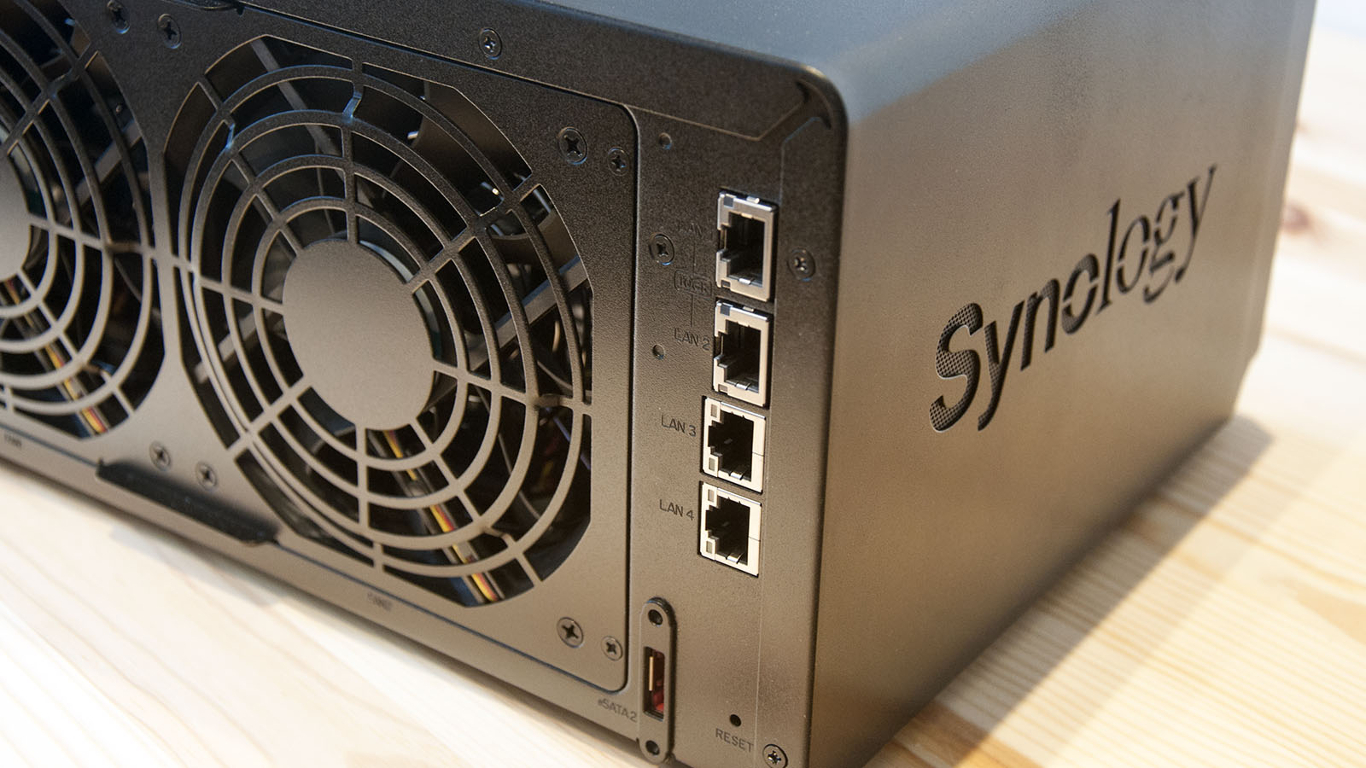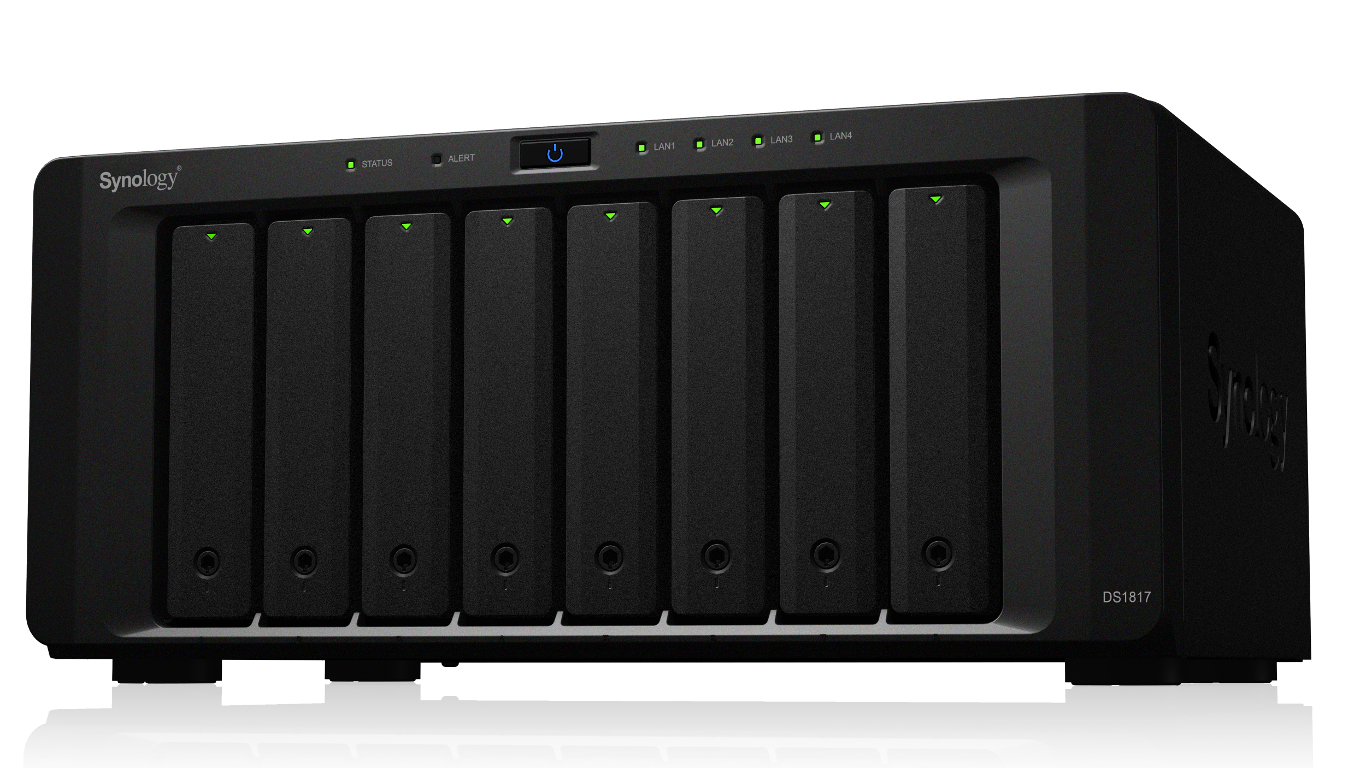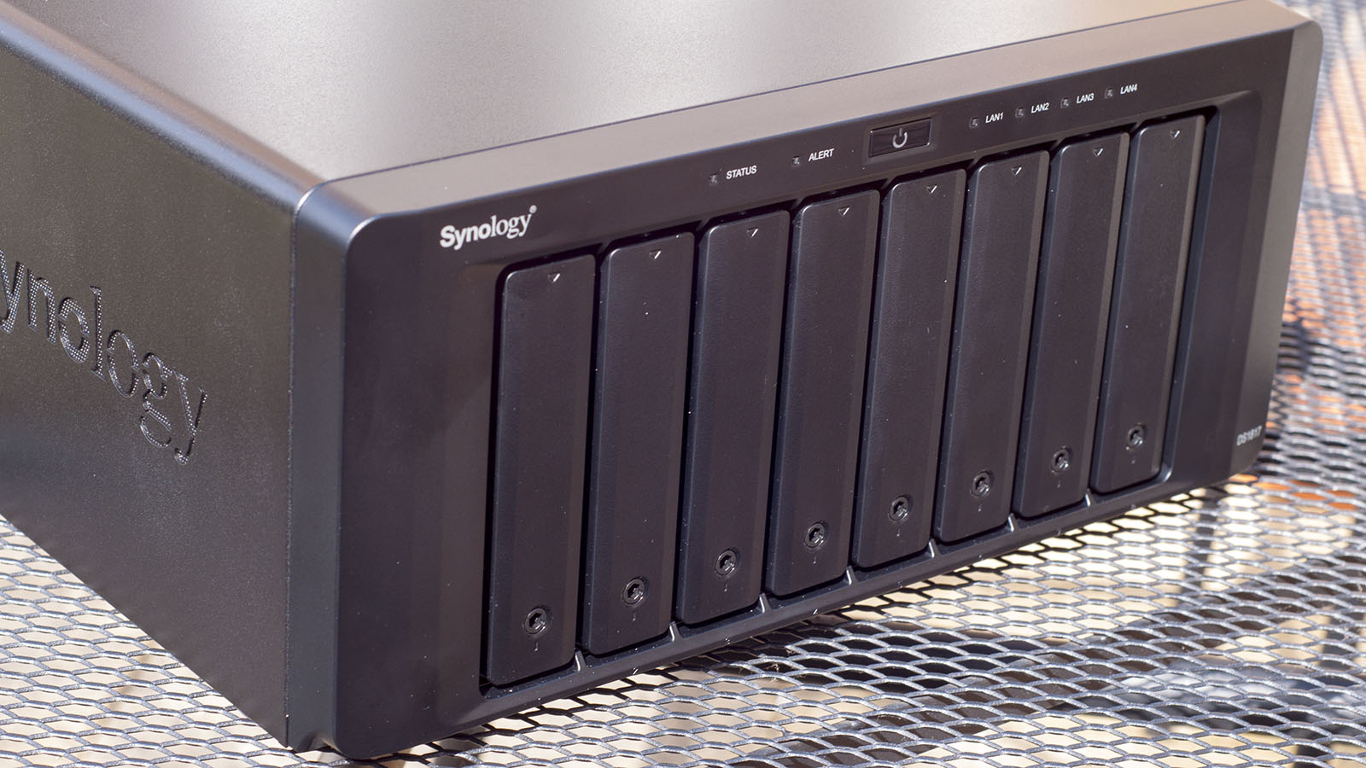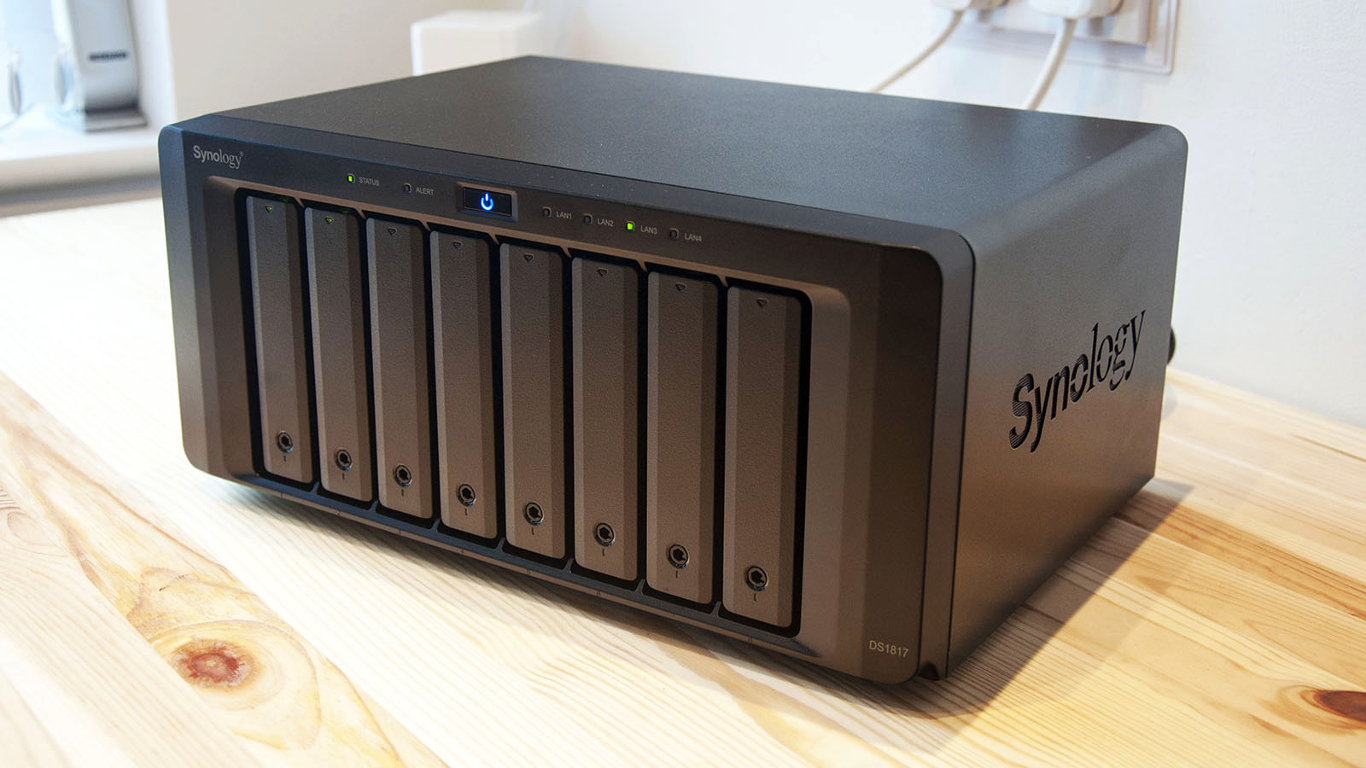TechRadar Verdict
The DS1817 manages to effectively blur the line between small business requirements and enterprise expectations, while offering an interesting alternative for those who want high performance external storage.
Pros
- +
Great DSM app selection
- +
Performance over 10GbE
- +
Scalability
Cons
- -
External drive boxes use eSATA connection
- -
Too few USB 3.0 ports
- -
Less iSCSI IOPS than the DS1817+
Why you can trust TechRadar
Those who have tracked Synology NAS hardware over the past 13 years since its first NAS box was released may have noticed a subtle evolution. Namely, a shift from single-core ARM-based hardware to progressively more powerful architectures, given the increasing demands that home and business users are making on their gear.
At the heart of this movement is Synology’s DSM operating system, a Linux derivative built to provide a solid platform for both file serving and services. It now sports nearly 100 installable applications, and the temptation is there to use more of them simultaneously.
That’s the scenario that the DS1817 is built to address, handling multiple service functions and lots of users, while providing a failure-resistant storage facility.

Pricing and availability
The DS1817 costs £827 ($850 in the US) without any drives, almost the same price as its next-tier DS1817+ (2GB) brother. While the pricing is somewhat confusing, it’s cheaper than the comparable QNAP TVS-863+ 4GB at £1,198, and much less than Netgear’s ReadyNAS 528X at £1,144 ($1,600).
The obvious choice might be to get even more processing power and M.2 module support in the DS1817+. That would work, although the DS1817+ doesn’t come with 10GbE out of the box, requiring the extra expense of adding a 10GbE PCIe card.
The initial cost of these devices can be a moot point in many respects, however, simply because filling them up with 10TB drives is likely to cost you three times as much as the machine – and that’s not the end of the outlay.
With eight slots to fill you do have the option to partially occupy the bays, then add more drives later. But our experience is that this isn’t the wisest course to take, as this mixing of drive specs and sizes can often become problematic, as can volume resizing exercises.

A better use of those slots is to leverage the possible capacity or create multi-layered redundancy. The options are numerous: mirroring, redundant array and the allocation of hot-swap drives ready to jump into action if the array goes critical due to failure.
All these possibilities are available for those who have a healthy level of data loss paranoia, in whatever way they wish to express it.
This hardware isn’t cheap, but on balance it’s acceptably priced considering the high build quality, scalability and flexibility that the DS1817 has to offer.
As for availability, the DS1817 should go on sale globally later this month.
Here is the configuration of the Synology DiskStation DS1817 TechRadar reviewed:
CPU: Annapurna Labs Alpine AL-314 (quad-core, 1.7GHz)
RAM: 4GB DDR3L (expandable to 8GB)
Storage: 8 x 3.5-inch or 2.5-inch SATA drives
LAN ports: 2 x 1GbE (RJ-45), 2 x 10GbE (RJ-45)
External ports: 2 x USB 3.0, 2 x eSATA
Expansion: Via eSATA (2 x DX517) 10 extra drives
Weight: 5.31kg without drives
Size: 157 x 340 x 233mm (W x D x H)
Warranty: 3-year limited (more in some regions)
Design and features
From the outside the DS1817 is practically identical to the design of the DS1815, which is the unit that this offering supersedes. However, there is something inherently calming about Synology’s signature black drive enclosure with an embossed logo on the side.
There are some minor differences, but other than the tiny DS1817 label you’d be hard-pressed to tell them apart at first glance.
They both accept up to eight 3.5-inch or 2.5-inch SATA drives, giving a potential array of 80TB with current drive options. With optional external expansion boxes (DX517) you can add a further 10 drives and boost total capacity to a gargantuan 180TB.
The only real limitation of this scale is the maximum single volume capacity of 108TB, should you have an enormous amount of data you’d like to access in a single file structure.
To get all those drives to spin in unison, Synology utilised the Annapurna Labs Alpine AL-314 CPU – a quad-core Cortex-A15 SoC clocked at 1.7GHz.
The system comes with 4GB of DDR3L memory in a single socket, and an easily accessible second socket enables that to be increased to 8GB.
Network connectivity is excellent, having both dual 1GbE LAN ports and dual 10GbE ports. Each of these dual port combinations can be organised either to link aggregate or failover depending on your priorities.
There are also two eSATA ports for connecting the external drive enclosures, and a pair of USB 3.0 Type-A ports for connecting portable storage or a USB peripheral (printer) that you may wish to network share.

Our only query about the specification of this design is that surely more than two USB ports could have been squeezed out of this SoC.
A quick word on the use of eSATA as an expansion technology – this seems dated, as all the drives connected through it effectively share the bandwidth of a single SATA III port.
With conventional hard drives this is not a significant limitation, though it would be if you used SSDs or Hybrid drives in the expansion box.
The motivation for Synology to use a technology with more bandwidth, like Thunderbolt 2, is that the firm might be able to offer eight bay expansions, and not just five.

Being a ‘Value Series’ design, the DS1817 targets the advanced home user or small workgroup deployment.
Traditionally these machines aren’t powerful or upgradable and they don’t contain high-end features. The DS1817 seems to fly in the face of all those criteria, being the first Value Series DiskStation that Synology has made with user accessible RAM sockets and 10GbE networking.
Mark is an expert on 3D printers, drones and phones. He also covers storage, including SSDs, NAS drives and portable hard drives. He started writing in 1986 and has contributed to MicroMart, PC Format, 3D World, among others.

